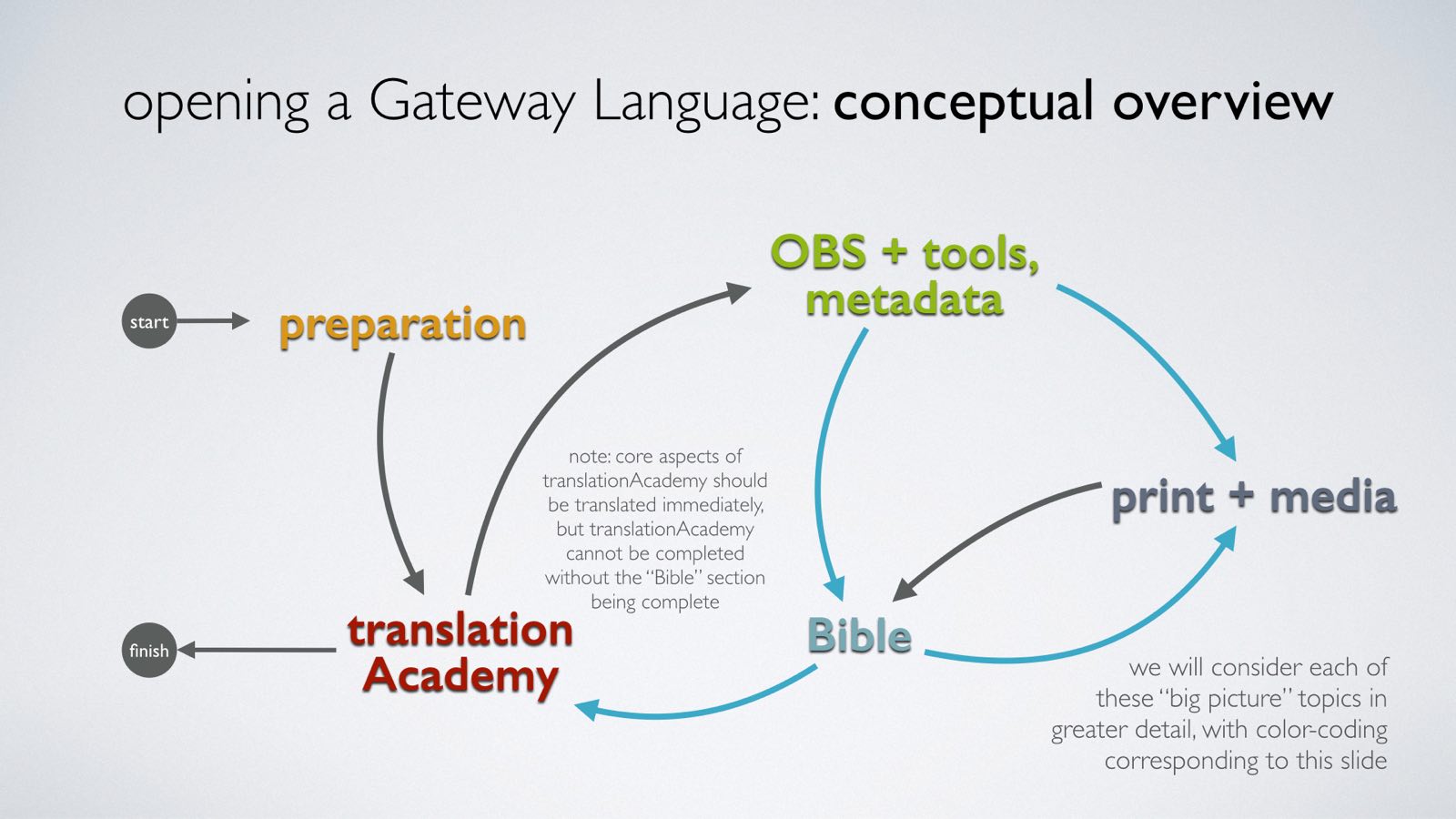
The Gateway Languages Strategy is a missiological model that leverages 21st century opportunities to provide all content, training, and tools needed for effective translation of biblical content in the smallest number of Languages of Wider Communication that covers 100% of the languages spoken collectively by the global Church through patterns of multilingualism.
Download the whitepaper that describes the Gateway Languages Strategy (revision 2) here:
The Gateway Languages List
Revision: 24
Currently, there are 44 known gateway languages, and research is ongoing for about ten more in Eastern Europe (mostly affecting the Roma people group). Additional information about Gateway Languages is available here. Note that, due to their different characteristics, Sign Languages are not covered in this strategy. Research is still ongoing to determine the complete number of gateway languages. Please contact us if you have updated information. Thank you!
The current map and additional information is available in these formats (revision 24):
Note: please see the glossary for information on language variants and identification.
Americas, 3:
- English (en)
- Portuguese (pt-BR)
- Spanish (es-419)
Africa, 6:
- Amharic (am)
- French (fr)
- Fulfulde (ff)
- Hausa (ha)
- Malagasy Plateau (plt)
- Swahili (sw)
Eurasia, 7:
- Arabic (ar)
- Hungarian (hu)
- Pashto (ps)
- Persian (fa)
- Russian (ru)
- Serbo-Croatian (scr)
- Urdu (ur)
South Asia, 14:
- Assamese (as)
- Bengali (bn)
- Gujarati (gu)
- Hindi (hi)
- Kannada (kn)
- Malayalam (ml)
- Marathi (mr)
- Nagamese (nag)
- Nepali (ne)
- Oriya (or)
- Punjabi (pa)
- Tamil (ta)
- Telugu (te)
- Urdu, Devanagari script (ur-Deva)
Asia, 10:
- Burmese (my)
- Cebuano (ceb)
- Ilocano (ilo)
- Khmer (kh)
- Laotian (lo)
- Malaysian (ms)
- Mandarin (zh)
- Tagalog (tl)
- Thai (th)
- Vietnamese (vi)
Pacific, 4:
- Bislama (bi)
- Indonesian (id)
- Papuan Malay (pmy)
- Tok Pisin (tpi)
Changelog
revisions:
- 24: added Hungarian (hu), Serbo-Croatian (scr), and Malagasy Plateau (plt).
- 23: proposed additions to list that were rejected: Dzongkha (dz), Igbo (ig), Yoruba (yo), Hungarian (hu), Serbo-Croatian (scr); proposed additions to list that were classified as Priority OLs: West Punjabi (pa), Oromo (om), Mandarin COV (cmn-x-omc); proposed additions that were accepted: Fulfulde (ff), Nagamese (nag), Urdu-Deva (ur-Deva); removed from list: Hindi DCV (hi-x-dcv), Tetum (tet), Spanish (es), Portuguese (pt); removed from GL list and classified as Priority OLs: Turkish (tr), Solomon Islands Pidgin (pis), Banjar (bjn), Ambon Malay (abs), Manado Malay/Bahasa Manado (xmm), Kaliledo (Ledo Kaililew), Toraja (sda), Maleyu (mgl), Kupang (mkn), Mongolian (mn).
- 22: added Tagalog (tl).
- 21: removed Tagalog (tl); added Ilocano (ilo); removed all Dominant Culture Variants from GL list, based on assumption that languages dependent on the GL can generate DCV translations from a non-DCV source.
- 20: from 49 to 48; removed Afrikaans (af); moved Arabic (ar, ar-x-dcv) from Africa to Eurasia region.
- 19: from 43 to 49; removed Dutch (nl), Japanese (ja); added Papua Malay (pmy), Ambon Malay (abs), Bahasa Manado (xmm), Kaliledo (lew), Toraja (sda), Banjar (bjn), Maleyu (mgl), Kupang (mkn).
- 18: from 44 to 43; removed Dari (prs).
- 17: from 46 to 44; removed sign languages due to factors suggesting incompatibility with this strategy.
How to Open a Gateway Language

A procedural overview for how to make content, tools, and training available in each gateway language is available in this document:
